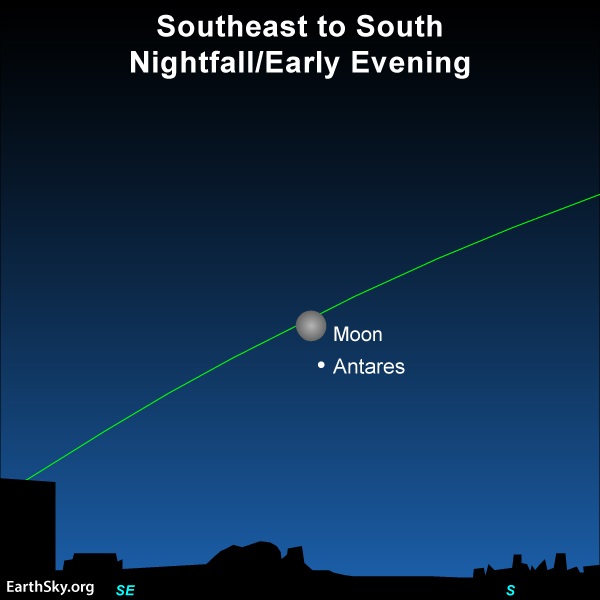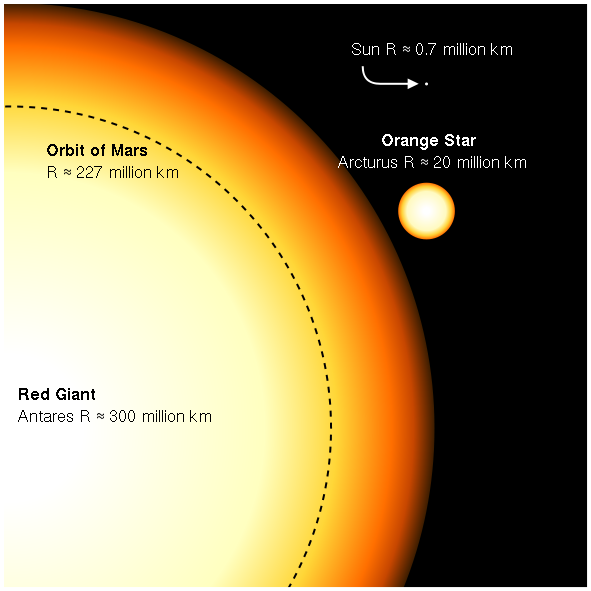
The June 22 moon and Antares
On June 22, 2021, let the nearly-full waxing gibbous moon introduce you to the star Antares. It’s a red star and the brightest light in the constellation Scorpius the Scorpion.
If the moon is too bright and washes Antares from view, place a finger in front of the moon.
If you can’t see this star’s red color, wait a night or two until the moon has moved away. Or aim your binoculars at Antares.
If your sky is dark enough, also look for the graceful shape of Antares’ constellation Scorpius. It’s one of the easiest constellations to recognize because of the elegant, curved, shape of the Scorpion’s tail.
Read more: Antares in science and skylore


Antares is a red supergiant
Any red-looking star that you can see with the unaided eye is either a red giant or red supergiant star. Antares is a red supergiant, a star in the autumn of its years. It’s expected to explode as a supernova one of these days. No telling when, though. It might be tomorrow, or a million years from now.
Although Antares lies way out there, at about 550 light-years distant, this star easily shines at 1st-magnitude brightness. In other words, it’s one of our sky’s brightest stars.
In order to beam so brightly, this star must be extremely luminous, that is, intrinsically very brilliant in and of itself, as opposed to merely appearing bright because of a nearer distance.
Antares’ red color indicates a relatively cool surface temperature, and cool stars actually shine less brilliantly than hot stars of the same size.
But Antares is just so big! Its sheer size makes this star more luminous than many stars with higher surface temperatures.
Read more: Ruby red Antares is the Scorpion’s heart

Bottom line: On June 22, 2021, let the moon be your guide to Antares, a red supergiant star.











